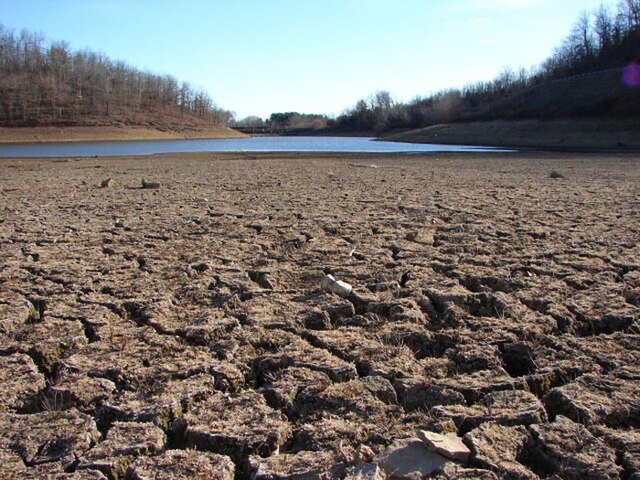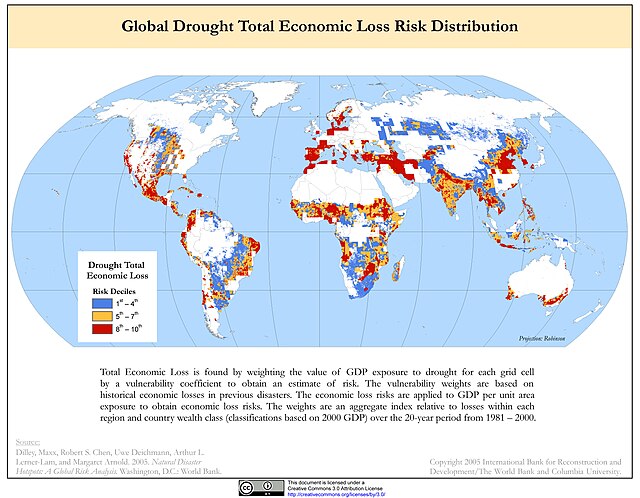The historical and ongoing droughts in California result from various complex meteorological phenomena, some of which are not fully understood by scientists.
A farmer welcoming rain during the 1976 drought.
Drought peak in late July 2014
Dry boat ramp at Folsom Lake, January 2014
In May 2021, water levels of Lake Oroville dropped to 38% of capacity. The boats are dwarfed by the exposed banks while California is headed into another drought year.
A drought is a period of drier-than-normal conditions. A drought can last for days, months or years. Drought often has large impacts on the ecosystems and agriculture of affected regions, and causes harm to the local economy. Annual dry seasons in the tropics significantly increase the chances of a drought developing, with subsequent increased wildfire risks. Heat waves can significantly worsen drought conditions by increasing evapotranspiration. This dries out forests and other vegetation, and increases the amount of fuel for wildfires.
Fields outside Benambra, Australia suffering from drought in 2006.
Contraction and desiccation cracks in the dry earth of the Sonoran desert, northwestern Mexico
A dry lakebed in California. In 2022, the state was experiencing its most serious drought in 1,200 years, worsened by climate change.
Global drought total economic loss risk








